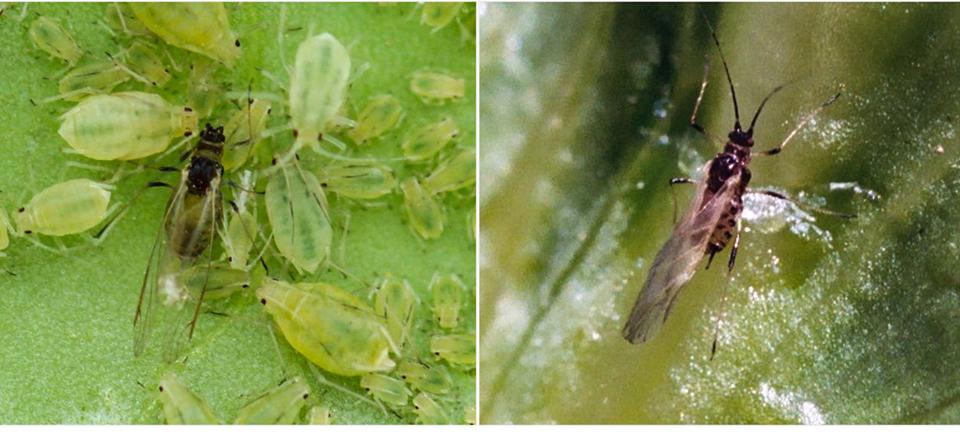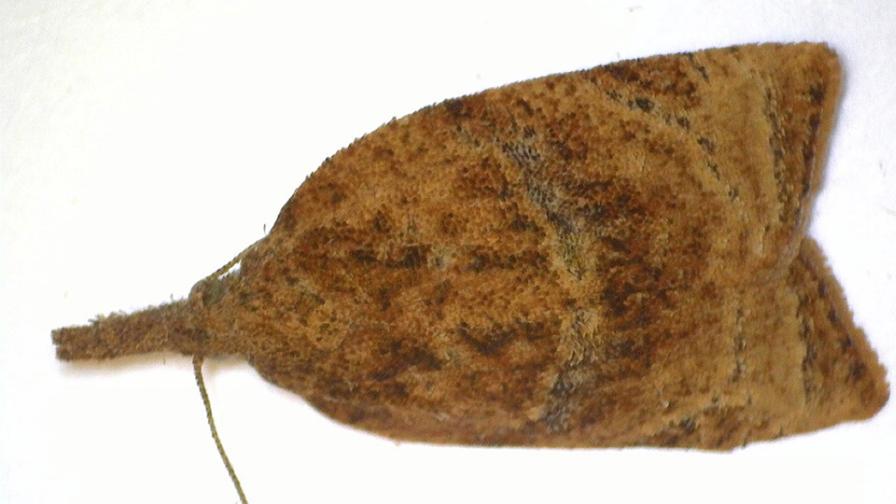Want a Proper Vegetable Insect Pest Identification? Here’s How To Get It

Scouting for vegetable insect pests can get confusing at times. These two pests might look alike, but are ultimately quite different. Green peach aphid (left) and lettuce aphid (right) found on lettuce.
Photos by John C. Palumbo
In high-value vegetable crops, correctly identifying insect pests is essential for making effective management decisions. We’ve previously discussed in American Vegetable Grower how insect scouting is considered the foundation of integrated insect pest management (IPM) programs where the primary goal of scouting is to identify the pest species present in the field and assess their abundance and damage.
So why is properly identifying insects in vegetable crops so important?
Pest or Beneficial?
When investigating insects in your crops, a PCA must first decide whether it’s with a friend or foe.
In brassica crops, for example, we often find big-eyed bugs (Geocoris spp.) that help prevent significant damage to seed by feeding on aphids. However, this beneficial predator can be confused with the most damaging pest found on brassica seed crops, the false chinch bug, Nysius Raphanus, which requires insecticide treatments to prevent losses in seed quality. In this situation, correct identification can save growers money by preventing unnecessary insecticide applications.
Correct identification can also help PCAs choose the most cost-effective control tactic or insecticide.
A good example are aphids in leafy vegetables, which if not controlled can contaminate heads and render the produce unmarketable. In Arizona and California, six aphid species are known to occur in lettuce, but not all species are killed by all classes of insecticide chemistry. Where one insecticide can effectively control green peach aphid, Myzus pericae, the same insecticide is ineffective against lettuce aphid, Nasonovia ribinigri.
It also good to pay particularly close attention to unusual pests. They may turn out to be an invasive pest, new to your state.
We experienced this firsthand in 2009 in the Desert Southwest when Bagrada hilaris (bagrada bug) was first found on broccoli. Many PCAs had reported seeing the odd-looking insect that resembled a lady beetle and considered it harmless.
It wasn’t until later after the pest was accurately identified that they discovered the harmless insect was actually an invasive stink bug causing significant damage to their crops.
Internet Searches Can Be Iffy
PCAs and growers have many resources available for identifying insect pests. An internet search can yield literally any insect pest known to occur but can be frustrating.
When using a search engine to identify a pest, it’s best to include the color and shape of the insect and preferably the type of insect (e.g., beetle, fly, etc.). The crop on which the pest has been found can also narrow down the search.
And numerous university Cooperative Extension publications can be found online that can help identify common or unusual pests found in local crops.
Extension Is a Reliable Source
But perhaps the most accurate way to identify a pest in your vegetable crop is to have it examined by an Extension specialist. Most land-grant universities employ entomologists who are skilled in insect taxonomy and have resources for identification readily available to them.
At the University of Arizona, we have several skilled Extension Entomologists, and a dedicated Extension Insect Diagnostician who primary role is to identify insect for growers, PCAs and the public. If they cannot identify your pest, it surely is something new or rare.
Collect Specimens
To ensure a rapid and accurate identification, it’s always best to collect live specimen and send them directly to the Extension specialist. The better shape the insects are in, the quicker an identification can be made.
I recommend that PCAs carry small zip-lock plastic bags in the truck to keep the insects alive until they reach the specialist. Best to keep the specimen cool also. Dead insects are also useful if they are in one piece. Nothing worse than having pest sample delivered to your lab in a plastic soda bottle that has been on the dashboard of a truck all day. Under those conditions, identification can be a challenge.
Take a Phone Image
With the ever-improving advancement of cell phone cameras, it is more common today to receive images of an unknown pest via text or email. This works well if the image has good-to-excellent resolution. I can’t tell you how many times I’ve received an image that is either too small or too blurry. An accurate ID under those conditions is almost impossible.
For small insects, using a lens attachment on your cell phone almost always results in high-quality images capable of identification. These can be purchased at a reasonable cost and are very useful for small insects like aphids or thrips.
For larger insects like caterpillars or beetles, it’s always good to place a nickel or quarter next to the insect to provide some perspective.
Finally, take more than one image and from different angles. Sometimes it’s necessary to see the bottom of an insect or it’s antenna to narrow down the identification.

Omnivorous leafroller larvae feeding on cantaloupe fruit. It looks a great deal like pickleworm.
Photo by John C. Palumbo
The Case of the Unknown Caterpillar
Sometimes you have to do a little extra to get a proper ID of an unknown pest.
Recently, we received a good quality image of a Lepidopterous larvae found feeding on cantaloupe fruit in Arizona and California. At first inspection, the larvae looked very similar to a pickleworm, Diaphania nitidalis, which is known to feed on cucurbits.
It wasn’t a complete match with images of pickleworm found on the internet, however. Perhaps more importantly, pickleworms are not known to occur in the Southwest U.S.
So, we collected more larvae, took more images, and sent them off to our colleagues at the University of Florida, who have experience with this pest. They tended to agree that it looked like pickleworm, but something wasn’t quite right.
Ultimately, we reared out the larvae and took images of the emerging moth, which we sent to a Lepidopterous specialist in California and finally got our identification.

Because we had a live specimen, we were able to rear the larvae to the moth stage. Only then did we finally identify it as the pest omnivorous leafroller.
Photo by John C. Palumbo
It turned out to be an omnivorous leafroller, Platynota stultana. This pest can periodically be found on alfalfa, cotton, and citrus in Arizona and California. But it had not previously been found on desert melons. Good thing we put in the extra effort, or we may have falsely claimed that a new cucurbit pest (pickleworm) had invaded the Southwest.










